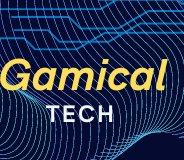
Interoperability is a critical factor in the successful deployment and functioning of Internet of Things (IoT) devices and platforms. As the IoT ecosystem continues to expand, ensuring that various devices can communicate and work together seamlessly is essential for creating a user-friendly experience and unlocking the full potential of smart technology. This discussion highlights the importance of interoperability, its impact on user experience, and its implications for the future of smart ecosystems.
1. Definition of Interoperability
Interoperability refers to the ability of different IoT devices and platforms to communicate, exchange data, and work together effectively, regardless of their manufacturer or underlying technology. This capability can occur at different levels, including:
- Technical Interoperability: The ability of devices to connect and exchange data using common communication protocols, data formats, and standards.
- Syntactic Interoperability: The ability to share data in a format that is understood by all participating systems, ensuring consistent data representation.
- Semantic Interoperability: The ability of different systems to not only exchange data but also understand the meaning of that data, enabling more advanced interactions and insights.
2. Impact on User Experience
The importance of interoperability in IoT extends to various aspects of user experience:
- Seamless Integration: Interoperable devices allow users to integrate various products from different manufacturers into a cohesive smart ecosystem. For example, a user can connect smart lights, thermostats, security cameras, and voice assistants without compatibility issues. This seamless integration enhances convenience and usability.
- Enhanced Functionality: Interoperability enables devices to work together in more complex ways, providing enhanced functionality. For instance, a smart thermostat can communicate with weather sensors and smart blinds to adjust heating or cooling settings automatically based on external conditions and user preferences.
- Reduced Complexity: Users benefit from a simplified experience when devices work together effortlessly. A unified app or platform that can control multiple devices reduces the need for multiple interfaces, making it easier for users to manage their smart homes or businesses.
- Expanded Choices: Interoperability encourages innovation by allowing manufacturers to create devices that can work with a wide range of other products. This creates a competitive marketplace where consumers have more options, enhancing the likelihood of finding products that meet their specific needs.
3. The Future of Smart Ecosystems
The future of IoT and smart ecosystems hinges on the development of interoperability standards and protocols. Some key considerations include:
- Standardization Efforts: Industry organizations and alliances, such as the Internet of Things Consortium (IoTC) and the Connectivity Standards Alliance (CSA), are working towards developing universal standards that facilitate interoperability. These standards will help create a more cohesive IoT landscape and enable devices from different manufacturers to work together seamlessly.
- Ecosystem Growth: As more devices become interoperable, the potential for creating advanced smart ecosystems increases. For example, a smart city that integrates traffic sensors, public transportation systems, and smart streetlights can optimize traffic flow, reduce congestion, and enhance overall urban living.
- Security and Privacy Considerations: While interoperability enhances functionality, it also raises concerns about security and data privacy. Ensuring that devices can communicate without compromising user data will be critical as smart ecosystems grow. Standards that include robust security measures will be essential to mitigate risks.
- User-Centric Innovations: The focus on interoperability will drive the development of more user-centric innovations, such as personalized smart experiences that adapt to user behavior and preferences across devices. The ability for devices to learn from one another and collaborate will lead to more intuitive and effective solutions.
Conclusion
Interoperability is a cornerstone of the IoT ecosystem, significantly impacting user experience and shaping the future of smart technology. By enabling devices to communicate and work together, interoperability enhances convenience, functionality, and innovation. As the industry continues to evolve, establishing common standards and protocols will be essential for realizing the full potential of IoT and creating cohesive, user-friendly smart ecosystems. The successful integration of interoperable devices will pave the way for a future where technology seamlessly enhances daily life, making our homes, cities, and workplaces smarter and more efficient.
visit: gamicaltech.com
